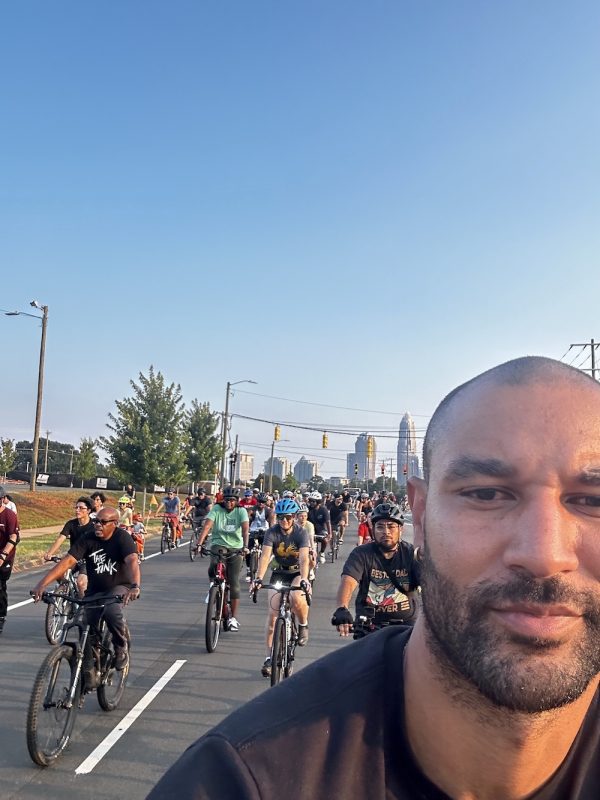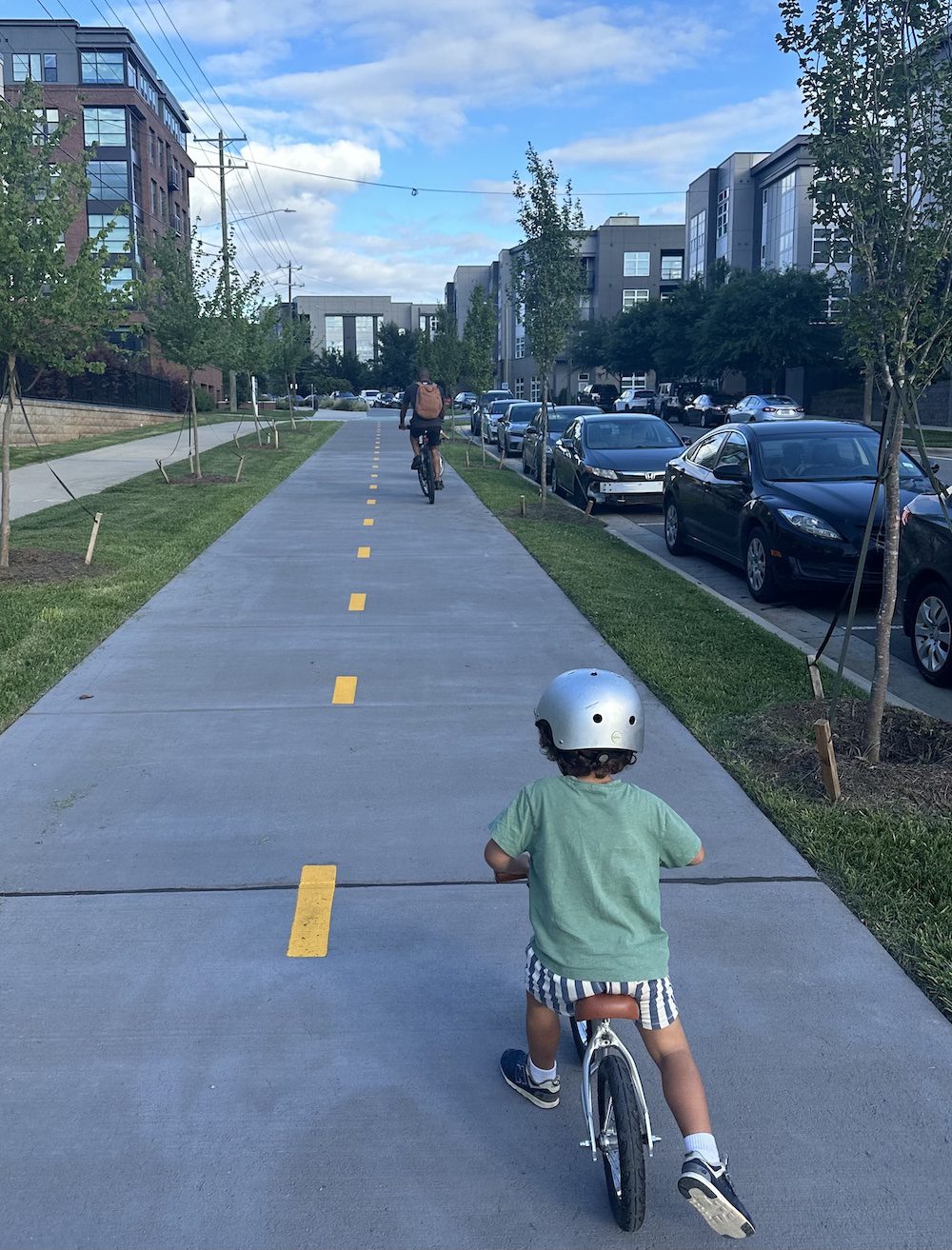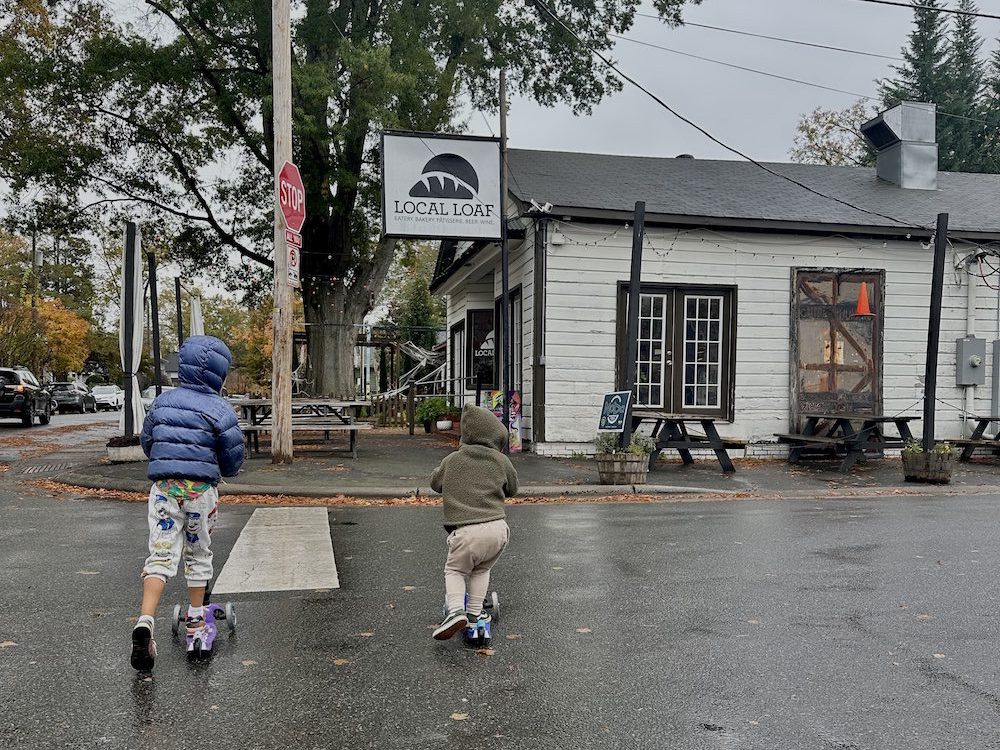Hi. I’m an Urbanist

I’ve been a lot of things in my life; a son, a brother, a nerdy engineering student, a professional soccer player, a husband, a father, and most recently…an urbanist.
Most people have never heard the word urbanist before. When I say it, I see the intrigue, and often confusion, on their face as they wonder exactly what it means.
Hearing “urban” sparks different reactions from different people. For some, it conjures up the beauty, energy, and endless opportunity that comes with life in a city. For others it means towering skyscrapers, overcrowding, and chaos. Urban is a word reserved for cities and is a word that stands in stark contrast to its suburban and rural counterparts.
Urbanism carries the baggage of the word “urban,” and is therefore dismissed as an idea that doesn’t impact those living outside the major cities.
But this is not a movement reserved for megacities. Anyone who wants to walk their kids to school in the morning, stop by a café on the way to work, then stroll to dinner with their partner at the end of the long day is an urbanist. It’s about connection – to neighbors, to the community, to the place you call home. Our goal as urbanists is to create walkable neighborhoods where life feels a little more human.
My vision for bringing urbanism to the masses is to focus on building 10,000 more main streets rather than 100 more Manhattans. This is a goal that transcends the contrived urban-suburban divide.
Main streets are neighborhood anchors – a center of gravity for everyday life. You find them in NYC, of course, but they also exist in towns like Belmont and in neighborhoods like my own – NoDa.
So what is urbanism exactly?
Guiding principles
Over time, I’ve found a few guiding principles that shape how I think about urbanism. This is not a definitive list, but it’s a good place to get started.
Center people, not cars
We deserve neighborhoods where getting around without a car is just as easy, if not easier, than driving. Cars are amazing tools that have unlocked so much human potential, but we’ve taken things too far.
In many neighborhoods, if you want to leave your house, there’s literally no place you can go without a car. You start the day in your garage then drive to the garage at work –never stepping foot outside. Grabbing coffee or dinner means sitting in a drive-thru line, in your car. The park may be just a half-mile away, but when you need to cross an eight lane stroad (a term coined by Charles Marohn of Strong Towns in 2013 to describe a potentially dangerous thoroughfare with qualities of both a road and street) to get there, the only option is to load the kids in the car and drive.

We don’t have to accept car dependency as the default. We can choose to build and live in places where everyone has the option to walk, bike, or take public transportation to all the essential places in our lives.
What does that look like? Wider sidewalks. Slower streets. Protected bike lanes. And a transit system that’s reliable, frequent, and actually goes where you need to.
Fix the zoning
You can’t have a walkable neighborhood if there’s nowhere to walk.
This means allowing shops, restaurants, large homes, daycares, apartments, and offices, to coexist, side by side. This beautiful mixture of uses is what you experience when visiting world renowned cities like Amsterdam or Paris. Neighborhoods that are vibrant at all times of the day because someone always has a reason to be there.
After the proliferation of cars, we began to separate uses, by law. In Charlotte for example, it is illegal to build anything other than housing in a vast majority of the city.
We live over here, work over there, and play in a separate third place. Separating where we live from harmful uses, like heavy manufacturing, makes sense. But to get more main streets, we need to make it legal to build them. Not just in specific areas, but all over the city.
More housing where it matters
Density is a word that gets tossed around a lot in urbanist circles – and for good reason. You need a critical mass of people to support a truly walkable neighborhood.
To the untrained ear, density can sound intimidating or synonymous with overcrowding. But in reality, density comes in many different forms. You can find it along the Rail Trail in South End, where new apartments, townhomes, and high-rises have breathed life into a once overlooked part of the city. But you’ll also find density on Selwyn Avenue in Myers Park where single-family homes and small apartment buildings live together in harmony.
The Rail Trail and Selwyn Ave are both great examples of urbanism in their own right. Main Streets in their own unique way. One is in a more traditional city center, and the other is in a more suburban setting, but they both provide a center of gravity for their neighborhoods. The result in both cases, is a delightful place to live.
Urbanism for everyone (who wants it)

The debate between cities and suburbs is loud, but it misses the point. Building 10,000 Main Streets means creating places where life just works better. Where the simple things like walking your kid to school or running into a neighbor at the coffee shop are built into the fabric of daily life. I’ve seen first-hand how the neighborhoods we build change the quality of life for our citizens.
Just last week, I walked to Local Loaf for breakfast with my family, rode the train to a museum in Uptown, grabbed a donut on North Davidson Street on the way home, then met some neighbors in the park to end the day.
That’s why I care about this so much. Everyone from Uptown to Ballantyne, from Belmont to Beatties Ford Road, deserves the chance to live in their own version of a walkable neighborhood. A place they’re proud to call home. A Main Street to invest in and call your own.